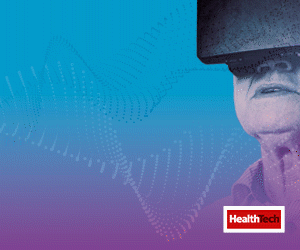Video Chat Platforms Help Older Adults with Making Social Connections
Purpose-driven screen time is finding multiple uses in senior living communities — both at forward-thinking communities and at residences taking advantage of new federal funding to purchase telecommunications services and technology.
A deployment of iPad devices has helped residents at Maplewood Senior Living enjoy video chats with relatives and virtual cocktail hours and birthday parties with their peers. The Connecticut organization upgraded its internet and Wi-Fi capabilities to fiber connectivity before the pandemic to support initiatives that include virtual reality, smart home devices and online education, according to Senior Housing News.
Preparation was also a priority for Thrive Senior Living, which uses video not only to support more telehealth efforts but also for residents’ independence. At Thrive’s Tribute at Black Hill community in Germantown, Md., newly added Alexa-enabled Echo Dot and Echo Show devices support audio and video chats.
And a recent effort between CDW and Google helped outfit seven Merrill Gardens retirement communities in the Seattle area with 1,000 Google Nest Hub Max devices. The tools, whose interfaces were simplified by Google for this audience, support video calls with family and in-house activities such as playing virtual card games and trivia and streaming YouTube videos.
Don’t hesitate to survey your residents about their wants and pain points throughout your efforts. They may have a larger appetite for technology solutions than you previously thought.
Training Older Adults to Use Tablets and Video-Enabled Tools
Despite their benefits, these tools are only effective if recipients are trained to use them.
Although many older adults are tech-savvy, one-third of people 65 and older do not use the internet, according to the Pew Research Center. And some mainstream consumer products aren’t designed with the limitations of older users in mind.
Still, recent survey data from AARP finds that consumers over 50 are helping fuel the demand for smart home technology. Fifty-three percent of respondents say they would prefer to have their healthcare needs managed by a mix of medical staff and healthcare technology.
It’s critical, then, that in-house IT teams be prepared to teach residents the basics of a tablet or video-enabled device. (When circumstances improve, they might consider training skilled residents as “super users” to educate their peers, both in formal settings and for impromptu troubleshooting.)














